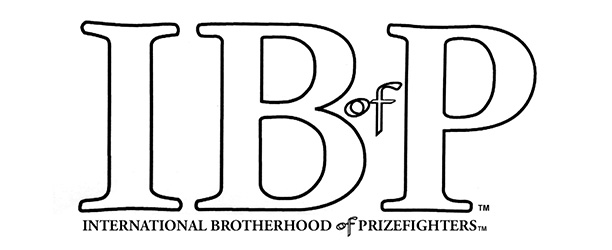Featured Articles
Broner Beats Mightily Impressive Malignaggi, Via Split Decision

Paul Malignaggi did a damn bit better than many folks thought he could, but sadly for him, he’s not blessed with power. Adrien Broner’s power edge spoke loudest after 12 rounds in the main event at Barclays Center, which was televised on Showtime, and promoted by Golden Boy. Broner won a split decision, by scores of 115-113 (Broner-Feldman), 115-113 (PM-Miller) and 117-111 (Broner-Schreck), but many if not most in the building left with massive respect for Malignaggi, who showed a mastery of the ring, a solid chin, superb defensive skills, and a fierce desire to compete.
Indeed, this fight might be most remembered as a moral victory for Paulie more than anything else.
Broner said after Paulie fought like he thought he would, that he ran after he felt Broner’s power. (I disagree.) He said he does respect Paulie as a boxer. He then boasted that he took Paulie’s belt and his girl. Next? He said he will let the fans pick his next foe.
Paulie after said it was a close fight, and that Broner didn’t work hard, tat he fought 30 seconds of each round. “The fight could have went either way. You have to take the belt from the champion,” he said. Paulie ranted that the ending was BS, and that this is typical of boxing. “Someone should stand up and do something about it,” he said. “It’s BS,” he repeated.
He was asked by Jim Gray if the fight was fixed. No, he said, but the politically connected guy always wins.
PM went 214-843, to 246-524 for Broner.
Broner (age 23; 26-0 entering; from Cincinnati, Ohio) was 146.8 while the WBA welter champ Malignaggi (grew up in Brooklyn, lives in LA; 32-4 entering; age 32) was 146.4 on Friday.
The fight was set up as a steppingstone for Broner, to provide another notch on his belt, his top scalp to date. Malignaggi came in as a rugged vet, and the Broner crew had to hope their guy would send a message by stopping Malignaggi conclusively. His corner had pulled the plug on him during round 11 against Ricky Hatton in 2008, and the ref stopped his fight with Amir Kahn in 2010 in round 11 as well. If Broner were able to stop Paulie early, he’d be due some respect. For Malignaggi, it was business as usual, with naysayers declaring he had no chance against a younger, stronger foe.
In the first, both men landed a few clean shots with Broner having a power edge. Paulie looked to work the jab and touch Broner to the body and arms. AB’s jab landed hard a few times.
In the second, Paulie had luck with left hands to the body. “You can’t hit me,” he said to Paulie. Broner drew a warning from the ref for trying to leg Paulie’s groin in a clinch.
In the third, straight rights hit Paulie clean but he hung tough, touched Broner to the chest a lot.
In the fourth, Paulie took it with volume. He stayed busy, nothing crazy powerful but enough to keep Broner on the defensive.
In the fifth, Broner buzzed Paulie at the end of the round, after Paulie worked hard to try and take the round.
In the sixth, Broner landed several hard, clean shots. Was Paulie getting tired? Broner’s left hooks looked heavy. In the seventh, it was a pretty tight round. Broner generates great power from in tight, and his power edge won him the round.
In the eighth, Broner looked fresh and his right hand was a nasty weapon, landing hard and clean.
In the ninth, Paulie ate a few solid rights and the crowd helped Broner with roars.
In the tenth, Paulie’s superb defense impressed. A left hook during a trade knocked his head back and maybe gave Broner the round. In these later rounds, PM wasn’t moving as much, and was in tight, fighting smart in close.
In the 11th, Paulie stayed active. He worked to the chest and made Broner work for openings.
In the 12, Paulie was right there; he ate a clean right, but he was right there, boxing smart, to the end. We went to the cards.
{youtube}rcOnI2e38Q4{/youtube}
{youtube}t-u4BFCbgS0{/youtube}
Featured Articles
Bygone Days: The Largest Crowd Ever at Madison Square Garden Sees Zivic TKO Armstrong
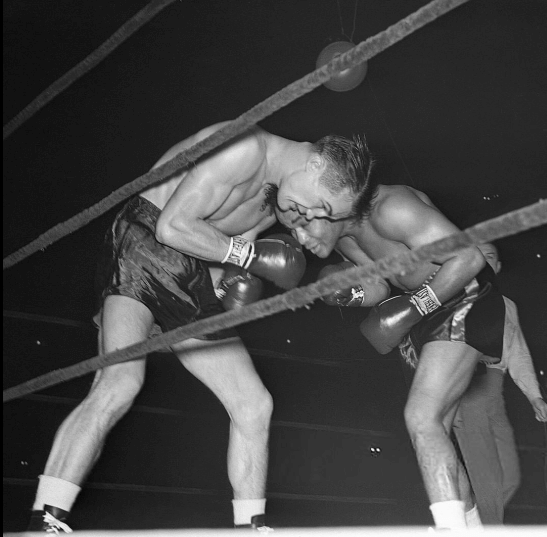
Bygone Days: The Largest Crowd Ever at Madison Square Garden Sees Zivic TKO Armstrong
There’s not much happening on the boxing front this month. That’s consistent with the historical pattern.
Fight promoters of yesteryear tended to pull back after the Christmas and New Year holidays on the assumption that fight fans had less discretionary income at their disposal. Weather was a contributing factor. In olden days, more boxing cards were staged outdoors and the most attractive match-ups tended to be summertime events.
There were exceptions, of course. On Jan. 17, 1941, an SRO crowd of 23,180 filled Madison Square Garden to the rafters to witness the welterweight title fight between Fritzie Zivic and Henry Armstrong. (This was the third Madison Square Garden, situated at 50th Street and Eighth Avenue, roughly 17 blocks north of the current Garden which sits atop Pennsylvania Station. The first two arenas to take this name were situated farther south adjacent to Madison Square Park).
This was a rematch. They had fought here in October of the previous year. In a shocker, Zivic won a 15-round decision. The fight was close on the scorecards. Referee Arthur Donovan and one of the judges had it even after 14 rounds, but Zivic had won his rounds more decisively and he punctuated his well-earned triumph by knocking Armstrong face-first to the canvas as the final bell sounded.
This was a huge upset.
Armstrong had a rocky beginning to his pro career, but he came on like gangbusters after trainer/manager Eddie Mead acquired his contract with backing from Broadway and Hollywood star Al Jolson. Heading into his first match with Zivic – the nineteenth defense of the title he won from Barney Ross – Hammerin’ Henry had suffered only one defeat in his previous 60 fights, that coming in his second meeting with Lou Ambers, a controversial decision.
Shirley Povich, the nationally-known sports columnist for the Washington Post, conducted an informal survey of boxing insiders and found only person who gave Zivic a chance. The dissident was Chris Dundee (then far more well-known than his younger brother Angelo). “Zivic knows all the tricks,” said Dundee. “He’ll butt Armstrong with his head, gouge him with his thumbs and hit him just as low as Armstrong [who had five points deducted for low blows in his bout with Ambers].”
Indeed, Pittsburgh’s Ferdinand “Fritzie” Zivic, the youngest and best of five fighting sons of a Croatian immigrant steelworker (Fritzie’s two oldest brothers represented the U.S. at the 1920 Antwerp Olympics) would attract a cult following because of his facility for bending the rules. It would be said that no one was more adept at using his thumbs to blind an opponent or using the laces of his gloves as an anti-coagulant, undoing the work of a fighter’s cut man.
Although it was generally understood that at age 28 his best days were behind him, Henry Armstrong was chalked the favorite in the rematch (albeit a very short favorite) a tribute to his body of work. Although he had mastered Armstrong in their first encounter, most boxing insiders considered Fritzie little more than a high-class journeyman and he hadn’t looked sharp in his most recent fight, a 10-round non-title affair with lightweight champion Lew Jenkins who had the best of it in the eyes of most observers although the match was declared a draw.
The Jan. 17 rematch was a one-sided affair. Veteran New York Times scribe James P. Dawson gave Armstrong only two rounds before referee Donovan pulled the plug at the 52-second mark of the twelfth round. Armstrong, boxing’s great perpetual motion machine, a world title-holder in three weight classes, repaired to his dressing room bleeding from his nose and his mouth and with both eyes swollen nearly shut. But his effort could not have been more courageous.
At the conclusion of the 10th frame, Donovan went to Armstrong’s corner and said something to the effect, “you will have to show me something, Henry, or I will have to stop it.” What followed was Armstrong’s best round.
“[Armstrong] pulled the crowd to its feet in as glorious a rally as this observer has seen in twenty-five years of attendance at these ring battles,” wrote Dawson. But Armstrong, who had been stopped only once previously, that coming in his pro debut, had punched himself out and had nothing left.
Armstrong retired after this fight, siting his worsening eyesight, but he returned in the summer of the following year, soldiering on for 46 more fights, winning 37 to finish 149-21-10. During this run, he was reacquainted with Fritzie Zivic. Their third encounter was fought in San Francisco before a near-capacity crowd of 8,000 at the Civic Auditorium and Armstrong got his revenge, setting the pace and working the body effectively to win a 10-round decision. By then the welterweight title had passed into the hands of Freddie Cochran.
Hammerin’ Henry (aka Homicide Hank) Armstrong was named to the International Boxing Hall of Fame with the inaugural class of 1990. Fritzie Zivic followed him into the Hall three years later.
Active from 1931 to 1949, Zivic lost 65 of his 231 fights – the most of anyone in the Hall of Fame, a dubious distinction – but there was yet little controversy when he was named to the Canastota shrine because one would be hard-pressed to find anyone who had fought a tougher schedule. Aside from Armstrong and Jenkins, he had four fights with Jake LaMotta, four with Kid Azteca, three with Charley Burley, two with Sugar Ray Robinson, two with Beau Jack, and singles with the likes of Billy Conn, Lou Ambers, and Bob Montgomery. Of the aforementioned, only Azteca, in their final meeting in Mexico City, and Sugar Ray, in their second encounter, were able to win inside the distance.
By the way, it has been written that no event of any kind at any of the four Madison Square Gardens ever drew a larger crowd than the crowd that turned out on Jan. 17, 1941, to see the rematch between Fritzie Zivic and Henry Armstrong. Needless to say, prizefighting was big in those days.
A recognized authority on the history of prizefighting and the history of American sports gambling, TSS editor-in-chief Arne K. Lang is the author of five books including “Prizefighting: An American History,” released by McFarland in 2008 and re-released in a paperback edition in 2020.
To comment on this stoty in the Fight Forum CLICK HERE
Featured Articles
Jai Opetaia Brutally KOs David Nyika, Cementing his Status as the World’s Top Cruiserweight
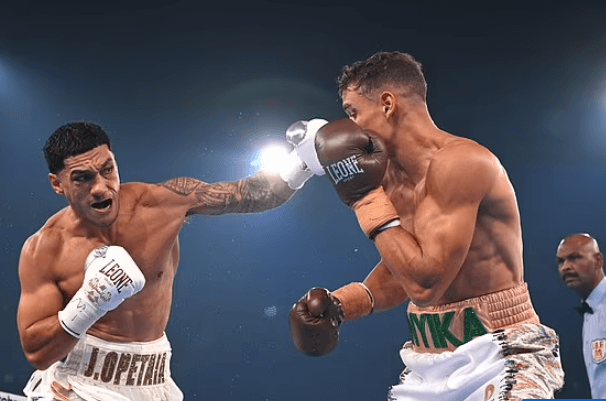
In his fifth title defense, lineal cruiserweight champion Jai Opetaia (27-0, 21 KOs) successfully defended his belt with a brutal fourth-round stoppage of former sparring partner David Nyika. The bout was contested in Broadbeach, Queensland, Australia where Opetaia won the IBF title in 2022 with a hard-earned decision over Maris Briedis with Nyika on the undercard. Both fighters reside in the general area although Nyika, a former Olympic bronze medalist, hails from New Zealand.
The six-foot-six Nyika, who was undefeated in 10 pro fights with nine KOs, wasn’t afraid to mix it up with Opetaia although had never fought beyond five rounds and took the fight on three weeks’ notice when obscure German campaigner Huseyin Cinkara suffered an ankle injury in training and had to pull out. He wobbled Opetaia in the second round in a fight that was an entertaining slugfest for as long as it lasted.
In round four, the champion but Nyika on the canvas with his patented right uppercut and then finished matters moments later with a combination climaxed with an explosive left hand. Nyika was unconscious before he hit the mat.
Opetaia’s promoter Eddie Hearn wants Opetaia to unify the title and then pursue a match with Oleksandr Usyk. Gilberto “Zurdo” Ramirez, a Golden Boy Promotions fighter, holds the WBA and WBO versions of the title and is expected to be Opetaia’s next opponent. The WBC diadem is in the hands of grizzled Badou Jack.
Other Fights of Note
Brisbane heavyweight Justis Huni (12-0, 7 KOs) wacked out overmatched South African import Shaun Potgieter (10-2), ending the contest at the 33-second mark of the second round. The 25-year-old, six-foot-four Huni turned pro in 2020 after losing a 3-round decision to two-time Olympic gold medalist Bakhodir Jalolov. There’s talk of matching him with England’s 20-year-old sensation Moses Itauma which would be a delicious pairing.
Eddie Hearn’s newest signee Teremoana Junior won his match even quicker, needing less than a minute to dismiss Osasu Otobo, a German heavyweight of Nigerian descent.
The six-foot-six Teremoana, who akin to Huni hails from Brisbane and turned pro after losing to the formidable Jalolov, has won all six of his pro fights by knockout while answering the bell for only eight rounds. He has an interesting lineage; his father is from the Cook Islands.
Rising 20-year-old Max “Money” McIntyre, a six-foot-three super middleweight, scored three knockdowns en route to a sixth-round stoppage of Abdulselam Saman, advancing his record to 7-0 (6 KOs). As one can surmise, McIntyre is a big fan of Floyd Mayweather.
The Opetaia-Nyika fight card aired on DAZN pay-per-view (39.99) in the Antipodes and just plain DAZN elsewhere.
To comment on this story in the Fight Forum CLICK HERE
Featured Articles
R.I.P. Paul Bamba (1989-2024): The Story Behind the Story

Paul Bamba, a cruiserweight, passed away at age 35 on Dec. 27 six days after defeating Rogelio Medina before a few hundred fans on a boxing card at a performing arts center in Carteret, New Jersey. No cause of death has been forthcoming, leading to rampant speculation. Was it suicide, or perhaps a brain injury, and if the latter was it triggered by a pre-existing condition?
Fuel for the latter comes in the form of a letter that surfaced after his death. Dated July 25, 2023, it was written by Dr. Alina Sharinn, a board-certified neurologist licensed in New York and Florida.
“Mr. Bamba has suffered a concussion and an episode of traumatic diplopia within the past year and now presents with increasing headaches. His MRI of the brain revealed white matter changes in both frontal lobes,” wrote Bamba’s doctor.
Her recommendation was that he stop boxing temporarily while also avoiding any other activity at which he was at risk of head trauma.
Dr. Sherinn’s letter was written three months after Bamba was defeated by Chris Avila in a 4-round contest in New Orleans. He lost all four rounds on all three scorecards, reducing his record to 5-3.
Bamba took a break from boxing after fighting Avila. Eight months would elapse before he returned to the ring. His next four fights were in Santa Marta, Colombia, against opponents who were collectively 4-23 at the time that he fought them. The most experienced of the quartet, Victor Coronado, was 38 years old.
He won all four inside the distance and ten more knockouts would follow, the last against Medina in a bout sanctioned by the World Boxing Association for the WBA Gold title. As widely reported, the stoppage, his 14th, broke Mike Tyson’s record for the most consecutive knockouts within a calendar year. That would have been a nice feather in his cap if only it were true.
Born in Puerto Rico, Paul Bamba was a former U.S. Marine who spent time in Iraq as an infantry machine gunner. In interviews on social media platforms, he is well-spoken and introspective without a trace of the boastfulness that many prizefighters exhibit when talking to an outsider. Interviewed in a corridor of the arena after stopping Medina, he was almost apologetic, acknowledging that he still had a lot to learn.
His life story is inspirational.
His early years were spent in foster homes. He was homeless for a time after returning to civilian life. Speaking with Boxing Scene’s Lucas Ketelle, Bamba said, “I didn’t have any direction after leaving the Marine corps. I hit rock bottom, couldn’t afford a place to stay…I was renting a mattress that was shoved behind someone’s sofa.”
He turned his life around when he ventured into the Morris Park Boxing Gym in the Bronx where he learned the rudiments of boxing under the tutelage of former WBA welterweight champion Aaron “Superman” Davis. “I love boxing,” he would say. “The confidence it gives you permeates into other aspects of your life.”
Bamba’s newfound confidence allowed him to carve out a successful career as a personal trainer. His most famous client was the Grammy Award winning R&B singer-songwriter Ne-Yo who signed Bamba to his new sports management company late in the boxer’s Knockout skein. Bamba was with Ne-Yo in Atlanta when he passed away. Ne-Yo broke the news on his Instagram platform.
Paul Bamba had been pursuing a fight with Jake Paul. Winning the WBA Gold belt opened up other potentially lucrative options. In theory, the holder of the belt is one step removed from a world title fight. Next comes an eliminator and, if he wins that one, a true title fight attached to a hefty purse will follow…in theory.
Rogelio “Porky” Medina, who brought a 42-10 record, had competed against some top-shelf guys, e.g., Zurdo Ramirez, Badou Jack, James DeGale, David Benavidez, Caleb Plant; going the distance with DeGale and Plant. However, only two of his 42 wins had come in fights outside Mexico, at age 36 he was over the hill, and his best work had come as a super middleweight.
Thirteen months ago, Medina carried 168 ½ pounds for a match in New Zealand in which he was knocked out in the first round. He came in more than 30 pounds heavier, specifically 202 ¼, for his match with Paul Bamba. In between, he knocked out a 54-year-old man in Guadalajara to infuse his ledger with a little brighter sheen.
Why did the WBA see fit to sanction the Bamba-Medina match as a title fight? That’s a rhetorical question. And for the record, the record for the most consecutive knockouts within a calendar year wasn’t previously held by Mike Tyson. LaMar Clark, a heavyweight from Cedar City, Utah, scored 29 consecutive knockouts in 1958 after opening the year by winning a 6-round decision. (If you are inclined to believe that all or most of those knockouts were legitimate, then perhaps I can interest you in buying the Brooklyn Bridge.)
Clark was being primped for a fight with a good purse which came when he was dispatched to Louisville to fight a fellow who was fairly new to the professional boxing scene, a former U.S. Olympian then known as Cassius Clay who knocked him out in the second round in what proved to be Clark’s final fight.
Paul Bamba was a much better fighter than LaMar Clark, of that I am quite certain. However, if Paul Bamba had gone on to meet one of the world’s elite cruiserweights, a similar outcome would have undoubtedly ensued.
One can summon up the Bamba-Medina fight on the internet although the video isn’t great – it was obviously filmed on a smart phone – and pieces of it are missing. Bamba was winning with his higher workrate when Medina took his unexpected leave, but one doesn’t have to be a boxing savant to see that Paul’s hand and foot speed were slow and that there were big holes in his defense.
This isn’t meant to be a knock on the decedent. Being able to box even four rounds at a fast clip and still be fresh is one of the most underrated achievements in all of human endurance sports. Bamba’s life story is indeed inspirational. When he talked about the importance of “giving back,” he was sincere. In an early interview, he mentioned having helped out at a Harlem food pantry.
Paul Bamba had to die to become well-known within the fight fraternity, let alone in the larger society. One hopes that his death will inspire the sport’s regulators to be more vigilant in assaying a boxer’s medical history and, if somehow his untimely death leads to the dissolution of the fetid World Boxing Association, his legacy would be even greater.
To comment on this story in the Fight Forum CLICK HERE
-
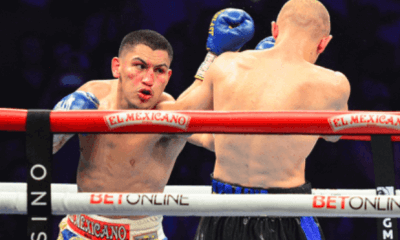
 Featured Articles2 weeks ago
Featured Articles2 weeks agoThe Ortiz-Bohachuk Thriller has been named the TSS 2024 Fight of The Year
-
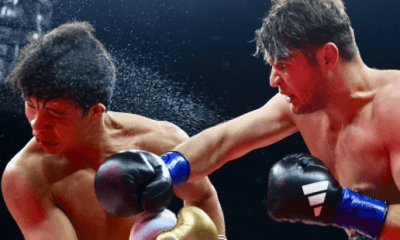
 Featured Articles4 weeks ago
Featured Articles4 weeks agoA Shocker in Tijuana: Bruno Surace KOs Jaime Munguia !!
-

 Featured Articles2 weeks ago
Featured Articles2 weeks agoFor Whom the Bell Tolled: 2024 Boxing Obituaries PART ONE (Jan.-June)
-
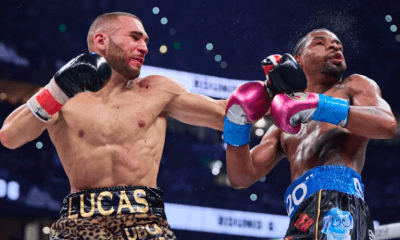
 Featured Articles3 weeks ago
Featured Articles3 weeks agoLucas Bahdi Forged the TSS 2024 Knockout of the Year
-
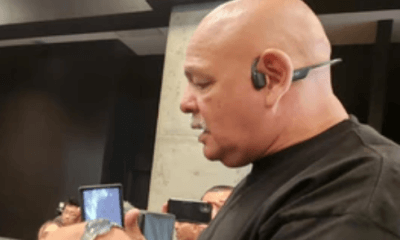
 Featured Articles4 weeks ago
Featured Articles4 weeks agoL.A.’s Rudy Hernandez is the 2024 TSS Trainer of the Year
-
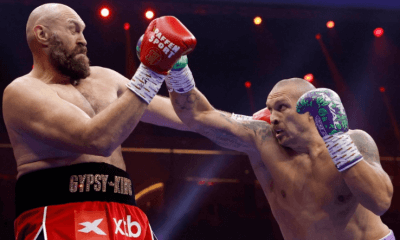
 Featured Articles3 weeks ago
Featured Articles3 weeks agoUsyk Outpoints Fury and Itauma has the “Wow Factor” in Riyadh
-

 Featured Articles2 weeks ago
Featured Articles2 weeks agoOleksandr Usyk is the TSS 2024 Fighter of the Year
-
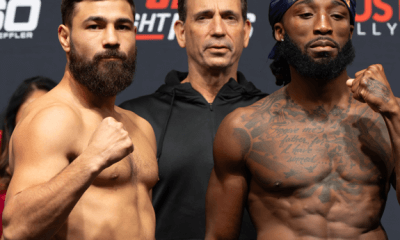
 Featured Articles4 weeks ago
Featured Articles4 weeks agoResults from the Chumash Casino where Akhmedov Gave a GGG-like Performance

